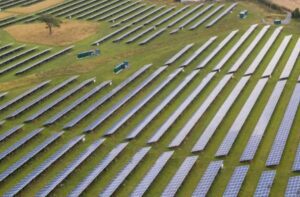As solar technologies go, concentrated solar thermal has been slow to catch on in Australia.
Just at the end of last month, Alinta Energy pulled the pin on the second stage of an ARENA-backed feasibility study into replacing its ageing brown coal generators in Port Augusta, South Australia, with a concentrated solar thermal tower and storage power station, declaring the idea financially unviable.
But another ARENA-backed venture, the Australian solar thermal research initiative (ASTRI), is keeping at the technology, via an $87 million, eight year international collaboration with leading research institutions, industry bodies and universities.
 The group’s stated mission is “to lower the cost of solar thermal power to 12 cents a kilowatt hour; targeting 20 cents a kilowatt hour by 2016 and 12 cents by 2020, whilst providing a power source that can be adjusted to demand (dispatchable generation).”
The group’s stated mission is “to lower the cost of solar thermal power to 12 cents a kilowatt hour; targeting 20 cents a kilowatt hour by 2016 and 12 cents by 2020, whilst providing a power source that can be adjusted to demand (dispatchable generation).”
But while we wait for that to happen, solar thermal enthusiasts can print out a 3D scale model of ASTRI’s 25MW CST reference power plant – a conceptual plant based on 12-plus years of solar data collected at a very sunny site in Alice Springs – to have and to hold as their own.
As you can see in the video below, this is something anyone with access to a 3D printer can do, making it a vastly easier prospect than developing an actual plant.
But to that end, ASTRI hopes the desktop CST model will be used as an education tool, to help demonstrate the benefits, value and opportunity that grid and fringe-of-grid concentrating solar thermal technology presents for Australia.
Once printed, the 19cm by 19cm model details the layout and positioning of more than 140 of the 6,377 heliostats that make up a complete solar field, along with the receiver tower and two molten salt storage tanks.
It also illustrates, when combined with a detailed field map of the full ASTRI heliostat array (see image below), that a CST plant that could generate up to 90GWh of electrical energy a year, with four hours of storage – enough to power more than 12,000 homes each year according to figures from the Australian Energy Regulator.

“As the debate heats up around the best path forward for Australia’s renewable energy future, it’s the storage component of CST technology that will revolutionise the way we deploy solar power,” said ASTRI director Manuel Blanco.
“This model brings that component to life, showing how the storage tanks are positioned in conjunction with the solar tower and heliostat array to capture and dispatch energy, even when the sun isn’t shining.”








